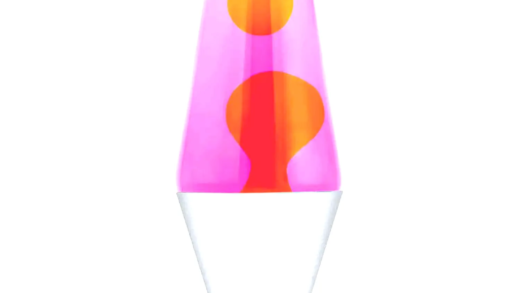Synesthesia is a unique condition where stimulation of one sensory pathway leads to automatic experiences in another. Types of synesthesia include grapheme-color, chromesthesia, and lexical-gustatory synesthesia. Diagnosis often relies on self-reports and behavioral tests, as there are no definitive medical tests. While synesthesia is relatively rare, affecting about 1 in 2,000 people, some forms are more common. Everyday examples include seeing colors when reading numbers or experiencing tastes when hearing certain words, showcasing how synesthesia enriches sensory experiences.
Types of Synesthesia
Synesthesia is a fascinating phenomenon where stimulation of one sensory pathway leads to automatic, involuntary experiences in a second sensory pathway. There are various types of synesthesia, each with unique characteristics:
- Grapheme-color synesthesia: Individuals associate specific letters or numbers with particular colors. For instance, the letter “A” might always appear red to one person and green to another.
- Chromesthesia: Sounds involuntarily trigger visual experiences. A musical note might evoke a burst of color in the mind’s eye, creating a vivid interplay between sound and sight.
- Lexical-gustatory synesthesia: Words elicit specific taste sensations. For example, hearing the word “chocolate” might bring forth the flavor of vanilla.
- Spatial sequence synesthesia: Numbers or dates are perceived as points in space, allowing individuals to visualize them in specific spatial arrangements.
- Personification synesthesia: Numbers or letters are assigned personalities, leading to unique emotional connections with each character.
Understanding these types helps highlight the diversity of synesthetic experiences. Each form offers a glimpse into how differently the brain can process information, leading to rich, multi-sensory perceptions.
How Synesthesia Affects Perception
Synesthesia significantly alters perception, allowing individuals to experience the world in a unique way. For instance, a synesthete might hear a piece of music and simultaneously see a kaleidoscope of colors. This alteration creates a layered sensory experience that enhances the richness of perception.
- Enhanced memory: Many synesthetes report improved memory capabilities due to their multi-sensory experiences. Associating colors with numbers or sounds can aid in recall.
- Emotional depth: Synesthesia often adds emotional weight to experiences. Music may not just be heard; it is felt visually and emotionally, deepening the connection to the art.
- Unique creativity: Artists and musicians with synesthesia may produce work that reflects their multi-sensory experiences. Their perception of reality is not just auditory or visual, but a combination of various senses.
This unique perception reshapes how synesthetes interact with their surroundings. Their world is a vibrant tapestry of sensations that offers insights into human consciousness.
Synesthesia and Music
For many synesthetes, music is not just an auditory experience; it becomes a visual spectacle. When they listen to a song, they may see colors or shapes that correspond to different notes or instruments. This connection between sound and visual perception creates a rich and immersive experience.
- Visual representation: Synesthetes often describe music as having distinct colors. A major chord might shine brightly, while a minor chord could appear darker or more subdued.
- Emotional resonance: Music can evoke powerful emotions, and synesthetes often feel these emotions more intensely due to their visual associations. This may lead to a profound appreciation of music.
- Creativity in composition: Many famous musicians, such as Pharrell Williams and Tori Amos, credit their synesthesia as a source of inspiration in their music creation process.
This relationship between synesthesia and music showcases the beauty of human perception and creativity. It emphasizes how interconnected our senses can be, leading to a richer understanding of art and expression.
Causes of Synesthesia
Synesthesia stems from a fascinating interplay of neurological and genetic factors. This condition often arises from increased connectivity between sensory regions in the brain, leading to unique experiences. Researchers have identified several possible causes of synesthesia:
- Neurological basis: Studies suggest that synesthesia may result from cross-activation of adjacent brain areas. For instance, the area responsible for processing color may overlap with that for processing sounds.
- Genetic factors: Synesthesia often runs in families, indicating a hereditary component. Certain genes may predispose individuals to develop synesthetic experiences.
- Developmental factors: Some theories propose that synesthesia is more common in early childhood, potentially linked to the way the brain develops and organizes sensory information.
Understanding these causes sheds light on how synesthesia manifests in different individuals and offers insights into the complexity of human perception.
Famous People with Synesthesia
Many notable figures throughout history have experienced synesthesia, often using it to enhance their creative processes. Here are some famous synesthetes:
- Vincent van Gogh: The renowned painter reportedly saw colors in response to music, which influenced his vibrant color palette.
- Pharrell Williams: The musician has spoken about how synesthesia informs his music, allowing him to visualize sounds as colors.
- Lady Gaga: The pop icon experiences sounds as colors and shapes, which she incorporates into her performances and artistic vision.
These individuals demonstrate how synesthesia can fuel creativity and lead to innovative contributions across various fields.
Synesthesia and Creativity
Synesthesia often enhances creativity, providing unique perspectives in artistic expression. Individuals with synesthesia may experience:
- Multi-sensory inspiration: Artists and musicians often draw upon their synesthetic experiences to create works that reflect a blend of senses. This can lead to richer and more vivid artistic expressions.
- Unique problem-solving: Synesthetes might approach creative challenges differently due to their varied sensory experiences, leading to innovative solutions.
- Collaborative art forms: Synesthesia can inspire collaborations between artists from different disciplines, merging visual arts with music, dance, and literature.
In summary, synesthesia not only shapes personal experiences but also influences the broader landscape of creativity, allowing artists to explore new frontiers in their work.
Diagnosing Synesthesia
Diagnosing synesthesia involves several methods that help identify this unique sensory phenomenon. While there is no definitive medical test for synesthesia, professionals often rely on a combination of self-reported experiences and standardized assessments.
- Self-report questionnaires: Many experts use questionnaires that ask individuals about their sensory experiences. These may include questions about specific triggers, such as whether certain sounds or letters evoke colors.
- Behavioral tests: Some tests assess the consistency of synesthetic responses. For example, an individual might be shown a series of letters and asked to identify their associated colors multiple times to see if the responses remain consistent.
- Neurological assessments: In some cases, brain imaging techniques, such as fMRI or PET scans, may be used to study the brain’s activity in synesthetes, providing insights into how their brains process sensory information.
Accurate diagnosis is essential, as it helps individuals understand their unique experiences and can also assist in distinguishing synesthesia from other sensory processing disorders.
How Common is Synesthesia?
Synesthesia is relatively rare, with estimates suggesting that it affects approximately 1 in 2,000 people. However, the prevalence may vary depending on the specific type of synesthesia. Some forms, like grapheme-color synesthesia, are more commonly reported than others.
- Variability in prevalence: Different studies have reported varying prevalence rates. Some suggest that it could be as high as 4% in the population, indicating that many may experience mild forms of synesthesia without even realizing it.
- Genetic factors: Research indicates that synesthesia often runs in families, suggesting a genetic component. This familial tendency can contribute to varying prevalence rates among different populations.
Understanding how widespread synesthesia is can help normalize the experiences of those who have it and promote further research into this intriguing phenomenon.
Everyday Examples of Synesthesia
Synesthesia can manifest in various everyday scenarios, making it a fascinating aspect of human perception. Here are some relatable examples that illustrate how synesthesia might be experienced in daily life:
- Colorful numbers: A person with grapheme-color synesthesia might see the number “5” as blue and the number “3” as yellow when looking at them on a page.
- Musical colors: While listening to a favorite song, a synesthete may visualize bright colors swirling in response to different notes, enhancing their overall enjoyment of the music.
- Taste of words: When hearing the word “apple,” an individual might experience a burst of sweet, fruity flavor in their mouth, making conversations about food even more vivid.
These examples highlight how synesthesia enriches daily experiences, turning mundane moments into vibrant sensory adventures. By understanding these relatable scenarios, readers can better appreciate the unique ways in which synesthesia influences perception in everyday life.





Comments are closed.